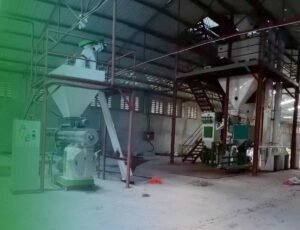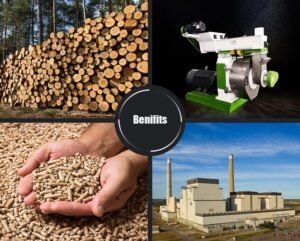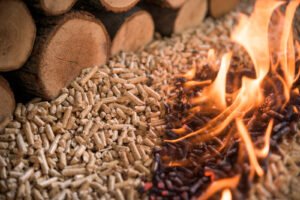
1. Introduction
In the booming world of sustainable agriculture, alfalfa pellet machines play a crucial role in transforming raw forage into dense, nutritious feed. However, not all pellet machines are the same. The most commonly debated types are ring die and flat die pellet machines.
Understanding the core differences and deciding which suits your operation best can be the key to maximizing profitability, efficiency, and quality.

2. What is an Alfalfa Pellet Machine?
An alfalfa pellet machine compresses chopped and dried alfalfa into cylindrical pellets, used widely as animal feed. The process involves conditioning, compression, extrusion, and cooling. These machines come in various capacities and configurations — most notably, ring die and flat die types.
3. Overview of Ring Die Pellet Machines
Ring die machines consist of a cylindrical die with radial holes. Rollers press the feed material into these holes as the die rotates, forming uniform pellets.
Key Features:
- High-volume continuous operation
- Radial compression
- Best for industrial-scale operations
4. Overview of Flat Die Pellet Machines
Flat die machines use a horizontal die plate. The feedstock is compressed between the rotating roller and the stationary flat die (or vice versa), pushing material through vertical holes.
Key Features:
- Simpler design
- Ideal for small-scale or mobile use
- Easier to maintain
5. Key Differences Between Ring Die and Flat Die Machines
| Feature | Ring Die | Flat Die |
|---|---|---|
| Die Shape | Cylindrical | Flat Plate |
| Orientation | Vertical/Horizontal | Horizontal |
| Feed Mechanism | Radial | Vertical |
| Scale | Large | Small to medium |
| Cost | Higher | Lower |
| Efficiency | High | Moderate |
6. Efficiency Comparison
Ring die machines offer superior efficiency for high-output operations due to:
- Continuous feeding system
- Lower friction losses
- Optimized compression ratio
Flat die machines, while less efficient in mass production, are ideal for custom or low-volume production. (Related post: Grass Pellet Machine)
7. Pellet Quality and Uniformity
Ring die machines typically produce:
- More uniform pellets
- Higher compression consistency
- Better density and durability
Flat die machines can result in:
- Irregular pellet shapes
- Slightly higher fines content
However, for many farm applications, flat die pellet quality is more than sufficient.
8. Capacity and Throughput
Ring die machines can reach capacities of 1 to 20+ tons per hour, making them perfect for:
- Feed factories
- Export-oriented production lines
Flat die machines generally handle 100 kg to 2 tons per hour, suitable for:
- Small farms
- Custom feed blends
- On-site pelletizing
9. Power Consumption and Energy Efficiency
Ring die machines are more energy efficient per ton of output. Though they require more power (typically 90-250 kW), the cost per pelletized ton is lower.
Flat die machines consume less total power (15-90 kW), but may require more time and energy per unit of output.
10. Durability and Wear Resistance
Ring die machines:
- Are built with high-strength steel alloys
- Feature dual rollers, reducing uneven wear
- Have longer lifespans in heavy-duty usage
Flat die machines:
- Experience more die and roller wear
- Require frequent maintenance in high-volume use
11. Maintenance and Downtime
Flat die machines are:
- Easier to maintain
- Require less technical skill
- Have lower-cost spare parts
Ring die machines need:
- Regular professional maintenance
- More expensive spare parts
- Scheduled downtime for die replacement
12. Safety Features in Ring Die vs. Flat Die Machines
Ring die machines often come equipped with:
- Advanced safety interlocks
- Automatic overload protection
- Dust suppression systems
- Noise enclosures
Flat die machines typically feature:
- Basic safety shields
- Manual shut-offs
- Simpler electrical systems
For higher safety standards, ring die machines are preferable.
13. Feedstock Flexibility
Flat die machines can process:
- Alfalfa
- Straw
- Leaves
- Small wood chips
- Crop residues
Ring die machines prefer:
- Uniform, pre-processed feedstocks
- Conditioned and moisture-adjusted materials
14. Initial Investment and Operating Costs
| Cost Type | Ring Die | Flat Die |
|---|---|---|
| Initial Investment | High ($30,000–$150,000) | Low ($3,000–$20,000) |
| Spare Parts | More expensive | Less expensive |
| Labor Requirement | Skilled operators | Basic training sufficient |
15. Space Requirements and Installation
Ring die machines:
- Require large floor space
- Need foundations or platforms
- Often part of a complete production line
Flat die machines:
- Compact and portable
- Can be installed in small sheds or barns
16. Suitability for Large vs. Small Scale Production
Large farms, cooperatives, or factories benefit from ring die pellet mills.
Individual farmers or hobby users find flat die machines more manageable and cost-effective.
17. Industrial vs. Farm Applications
- Industrial Use: Ring die (durable, scalable, automated)
- Farm Use: Flat die (affordable, mobile, flexible)
18. Impact on Animal Nutrition
Properly made pellets from either machine type:
- Enhance digestibility
- Improve storage and transport
- Minimize feed loss
However, ring die machines tend to produce more consistent nutrient profiles due to uniformity.
19. Noise and Vibration
Ring die machines:
- Run quieter with enclosed systems
- Are often fitted with anti-vibration mounts
Flat die machines:
- Can be noisy, especially when worn
- Lack advanced noise control
20. Automation and Control Options
Ring die systems often include:
- PLC or HMI panels
- Data logging systems
- Remote control
Flat die systems may feature:
- Manual control
- Basic digital interfaces
21. Common Industries Using Ring Die Machines
- Livestock feed factories
- Biomass fuel producers
- Agricultural cooperatives
- Export-oriented feed companies
22. Common Industries Using Flat Die Machines
- Small farms
- Backyard animal feeders
- Research institutions
- Organic feed producers
23. Transportability and Mobility
Flat die machines win here:
- Can be mounted on trailers
- Easy to relocate or reposition
Ring die machines are typically stationary and unsuitable for mobile setups.
24. Environmental Considerations
Both machines reduce agricultural waste by converting alfalfa into usable feed. Ring die machines tend to:
- Consume more power
- Offer better dust and emission control
Flat die machines:
- Are more energy flexible
- Can run on diesel or electric power
25. User Skill Requirements
Flat die machines require basic mechanical knowledge.
Ring die machines require trained technicians and sometimes engineers for troubleshooting and setup.
26. Customization and Add-On Features
Ring die systems support:
- Steam conditioners
- Automatic oil lubrication
- Weighing and bagging systems
Flat die machines can integrate:
- Simple mixers
- Manual feed chutes
- Cooling trays
27. Case Studies and Use Scenarios
Example A:
A 5,000-head cattle farm in Argentina uses a flat die machine for on-site alfalfa pellet production.
Example B:
A Chinese agricultural group produces 10 tons/hour of premium alfalfa feed using a ring die line with triple conditioning and PLC control.
28. Pros and Cons Summary
Ring Die Pros:
- High output
- Better pellet quality
- Long-term efficiency
Ring Die Cons:
- Expensive
- Complex maintenance
Flat Die Pros:
- Affordable
- Portable
- Easy to use
Flat Die Cons:
- Lower efficiency
- Frequent part replacement
29. How to Choose the Right Type for Your Business
Ask yourself:
- What is my daily/annual production requirement?
- What is my budget?
- How much space do I have?
- Do I have access to skilled labor?
Choose ring die if you plan for industrial growth and automation.
Choose flat die if you need flexibility, affordability, and simplicity.
30. Conclusion
Choosing between ring die and flat die alfalfa pellet machines is not a one-size-fits-all decision. Your ideal machine depends on production needs, budget, space, and long-term goals.
Understanding the technical differences and operational implications ensures you make an informed investment that enhances productivity and sustains profitability.
31. FAQs
Q1: Can I upgrade from flat die to ring die later?
A: Yes, though it may require additional infrastructure and training.
Q2: Are ring die pellets better for export?
A: Typically, yes — due to consistency, density, and appearance.
Q3: Which machine is better for custom feed recipes?
A: Flat die machines offer more flexibility for experimental or custom mixes.






